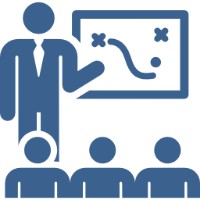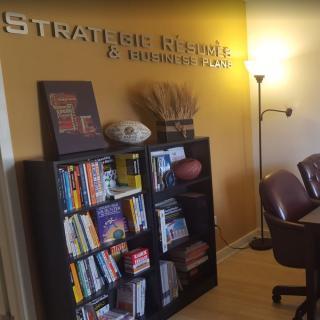News
Body Talk

3 min read
One of my Career Coaching clients, Brenda, was getting passed up for jobs, time after time, after the interview process. I wondered if it might be because her ‘body language’ was not helping her. Of course, we can all get nervous in an interview, but after a few mock interviews, we were able to zero in on Brenda’s issues (primarily involving sitting posture and handshake), resulting in her getting picked in only her second interview after that.
The good news is that, if like my client Brenda, you are getting a reasonable amount of quality interviews during your job search, your resume is apparently up to today’s standards and is doing its job. While no one should expect a job offer after each and every interview, you should see be seeing success at some point, providing that your interview skills are up to snuff. And that is where body language can come in.
According to CareerBuilder.com, “While it’s no secret that job interviews can be nerve-racking, a lot of job candidates spend a significant amount of time worrying about what they will say during their interview, only to blow it all with their body language. You need to effectively communicate your professionalism both verbally and nonverbally.”
Tony Lee of CareerCast.com says, “Studies indicate that body language accounts for a full 55% of any response, while what you actually say accounts for just 7%. The remaining 38% is taken up by the intonation, pauses and sighs you give off when answering a question.”
In my past articles, I’ve emphasized that good preparation and planning for your interview can make a world of difference. For example, you can do a bit of research on the company, analyze the job description for details, and memorize several powerful examples where you made a positive impact in your past jobs. All of this preparation will go a long way toward calming your nerves and hopefully acing the interview.
Here are some best practices in the area of body language as it relates to interviewing… a few helpful body language tips that you can use in your upcoming interviews:
Make a great entrance. Appear confident and calm at all times, even in the waiting area. Even the receptionist could have a say in who is hired. Avoid or limit colognes and perfumes.
While waiting, don’t hunch your shoulders or tuck your chin into your chest, which will make you seem closed off. Sit with your back straight and your chest open, signs that you’re confident and assertive.
Practice handshaking practice with a friend to find the right firm vs. limp balance. Shake right-handed and arrange belongings on your left side.
In the walk to the interview room, always follow the person to show your understanding of protocol, even if it is an assistant.
At the interview desk, it’s OK to place a slim portfolio on the table, but put your other belongings on the floor beside you, not on your lap.
Sit up straight, and lean slightly forward or in your chair, displaying your neck, chest and stomach area to signal that you’re open. Keep both feet on the floor and don’t cross your legs.
Always keep your hands above the desk and below the shoulders, preferably even lower, near your mid-section to communicate you’re centered, controlled, and calm.
Sitting too far away makes you look afraid, but too close is an intrusion. You can sit about 20 inches away from the table so that your gestures are visible.
Make your goodbye handshake the same as your initial one and maintain your good posture as you exit the office and onto the street.
Here is an inspirational video of Amy Cuddy, faculty member at Harvard Business School, talking about body language and power poses. Amy Cuddy’s Body Language Tips
The good news is that, if like my client Brenda, you are getting a reasonable amount of quality interviews during your job search, your resume is apparently up to today’s standards and is doing its job. While no one should expect a job offer after each and every interview, you should see be seeing success at some point, providing that your interview skills are up to snuff. And that is where body language can come in.
According to CareerBuilder.com, “While it’s no secret that job interviews can be nerve-racking, a lot of job candidates spend a significant amount of time worrying about what they will say during their interview, only to blow it all with their body language. You need to effectively communicate your professionalism both verbally and nonverbally.”
Tony Lee of CareerCast.com says, “Studies indicate that body language accounts for a full 55% of any response, while what you actually say accounts for just 7%. The remaining 38% is taken up by the intonation, pauses and sighs you give off when answering a question.”
In my past articles, I’ve emphasized that good preparation and planning for your interview can make a world of difference. For example, you can do a bit of research on the company, analyze the job description for details, and memorize several powerful examples where you made a positive impact in your past jobs. All of this preparation will go a long way toward calming your nerves and hopefully acing the interview.
Here are some best practices in the area of body language as it relates to interviewing… a few helpful body language tips that you can use in your upcoming interviews:
Make a great entrance. Appear confident and calm at all times, even in the waiting area. Even the receptionist could have a say in who is hired. Avoid or limit colognes and perfumes.
While waiting, don’t hunch your shoulders or tuck your chin into your chest, which will make you seem closed off. Sit with your back straight and your chest open, signs that you’re confident and assertive.
Practice handshaking practice with a friend to find the right firm vs. limp balance. Shake right-handed and arrange belongings on your left side.
In the walk to the interview room, always follow the person to show your understanding of protocol, even if it is an assistant.
At the interview desk, it’s OK to place a slim portfolio on the table, but put your other belongings on the floor beside you, not on your lap.
Sit up straight, and lean slightly forward or in your chair, displaying your neck, chest and stomach area to signal that you’re open. Keep both feet on the floor and don’t cross your legs.
Always keep your hands above the desk and below the shoulders, preferably even lower, near your mid-section to communicate you’re centered, controlled, and calm.
Sitting too far away makes you look afraid, but too close is an intrusion. You can sit about 20 inches away from the table so that your gestures are visible.
Make your goodbye handshake the same as your initial one and maintain your good posture as you exit the office and onto the street.
Here is an inspirational video of Amy Cuddy, faculty member at Harvard Business School, talking about body language and power poses. Amy Cuddy’s Body Language Tips

